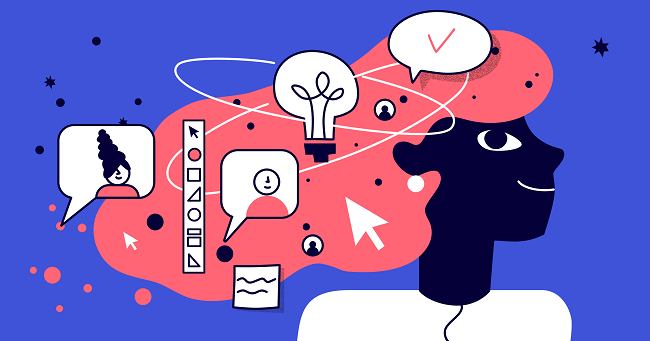The world is filled with complex problems. Don’t be afraid of them. Design thinking helps you resolve these problems quickly, efficiently, and permanently. The principles of design thinking start with understanding the humanity behind a problem. Then, you re-frame the problem with solutions that can be tested.
Design thinking is an empowering approach, helping you arrive at long-term solutions for even the most complex of problems. You simplify complex issues by identifying the humanity that exists in them. If you have multiple human perspectives, identify them.
When we understand the human component that exists in a problem, we have a better chance at producing solutions that satisfy the needs of the human perspectives involved. For more information, let’s learn about the principles of design thinking:

1. Empathize with the humanity
As you dig into the human aspect of a problem, you need to be open to observation and engagement. This allows you to immerse yourself into the problem, understanding the motivations that allow a person to feel a certain way about something.
Every person comes from a different background. We have different experiences. Empathize with them. Understand them. Design thinking relies on a human-first approach. This is an important principle to maintain at every stage.
2. Re-frame and define the problem in human ways
Classify a problem according to its effect on real human beings. Boil it down to a problem statement of two sentences or less. For example, let’s say you want to increase your revenues across a certain demographic. A more human way to put that is to say this demographic needs your product or service because it would help them with ‘x’.
Design thinking is all about framing the problem with a human focus. This is central to ideating with the human first rather than the corporation, organization, product, or idea being your guide. To strengthen your skills in this area, attend a design thinking workshop, which will teach you to master this technique in depth.
3. Create multiple possible solutions in an ideation session
Ideate according to what would benefit human beings. You may find this leads you away from solving a problem. This is ok. Ideating is all about introducing concepts and analyzing them in accordance with what you know about your audience.
Ultimately, if it doesn’t work for a real human being, it’s not going to be an effective solution. Design thinking is designed to find more than one solution, allowing you to eventually put your best ideas to the test.
4. Out-of-the-box thinking provides an alternative perspective
At the ideation stage, it’s an important principle to encourage out-of-the-box thinking. From techniques like brainstorming in a group setting to giving each team member their own private space to generate ideas, there are lots of ways to stimulate free, shameless thinking.
Later, we investigate. At the ideation stage, it’s time to throw suggestions out and get words flowing sans judgment.
5. Prototype every idea to determine the best option
Create prototypes. Apply your ideas in real-world situations. See how they perform. Human responses won’t lie. Investigating solutions in real-life scenarios allows you to see the positives or negatives.
Expect some ideas to be outright rejected and others to be improved upon to acceptance. This is very similar to how focus groups work. You are getting real data on user behavior and their uncensored thoughts and feelings.
6. Develop a solution to the problem
Through prototyping, it will become clearer what the solution is to a given issue. If you don’t arrive at a definitive solution, you may take your data and redefine the problem again. Your goal is to better understand your users, how they think and feel, and what their behaviour is around a problem.
At the end-point phase, you may still be refining and altering the solution. The objective is to rule out associated issues or by-products that need to be addressed.
7. Design thinking is not inflexible
Design thinking is not a concrete process. It has to be bendable and adaptable to different situations. You may assign teams to work concurrently on different stages. You may switch the order of how design thinking is done. You may have to repeat design thinking from different human perspectives to maximize the ideation-to-prototyping process.
While the principles of design thinking are maintained, the details of the process are at the discretion of the party overseeing it. Adjust the design thinking principles according to your scenario.
8. Open your ears to listen and hear the feedback
You aren’t always going to get a positive result with design thinking. You may receive feedback you don’t appreciate or agree with. As you gain insights, design thinking relies on this information being heard and utilized. If you aren’t ready to accept the data you receive, design thinking is unlikely to work in the way it’s intended to.
Both positive and negative, you are likely to see different perspectives on a product, service, or brand. The understanding you come away with will be more rounded, providing a glimpse of what your likely answer is.
9. Collaborate between design and user
Design thinking is reliant upon a strong relationship between ‘designer’ and ‘user’. The more designers are able to connect with users, the more efficient the design thinking process will go.
Three things to remember here are how users think, feel, and behave. In other words, prioritize on thoughts, feelings, behaviours. For most problems, the solution lies somewhere between these three elements.

